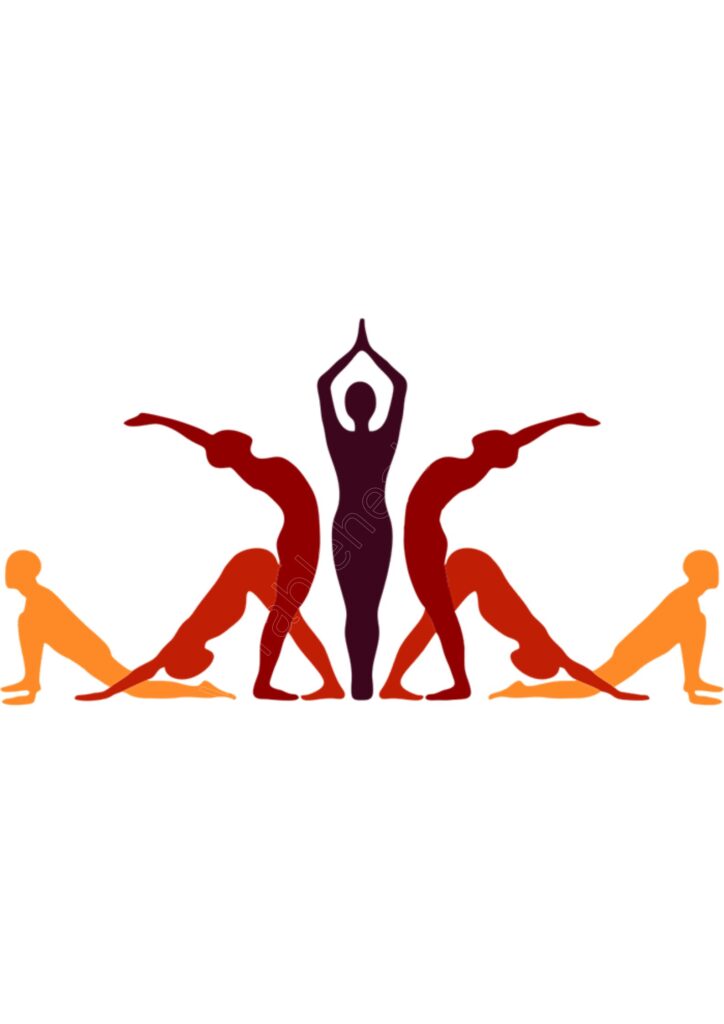Yoga, an ancient practice from India, is suitable for all ages and fitness levels, promoting holistic well-being. It integrates the mind, body, and spirit, focusing on physical postures and breathing techniques. This leads to increased flexibility, reduced stress, and mental clarity. Regular practice also encourages mindfulness, leading to heightened awareness and tranquility. This adaptability makes yoga suitable for all ages and fitness levels, ensuring a balanced and serene lifestyle. The experience of yoga is not only physical but also promotes mental clarity, emotional stability, and heightened awareness, making it a valuable tool for maintaining a healthy lifestyle.
Types of Yoga
Yoga is an ancient Indian practice that comes in a variety of forms, each with its own advantages and methods. Hatha yoga is a great way for beginners to gain strength and flexibility because of its emphasis on physical postures and breath control. Kundalini Yoga enhances the experience by adding breathing exercises, meditation, and dynamic poses. While Iyengar yoga stresses accuracy and alignment with supports, Vinyasa yoga uses breath to connect postures. The pinnacle of relaxation, restorative yoga encourages profound relaxation and stress alleviation by supporting the body in passive positions with props.
Yoga boosts weight loss and maintenance

Yoga, a holistic approach, significantly aids in weight loss and maintenance by enhancing metabolism through asanas, cultivating mindfulness, and reducing stress. It also helps in reducing emotional eating and cortisol levels, reducing weight gain. Regular practice builds lean muscle, promoting a higher resting metabolic rate, making yoga an inclusive and effective weight management tool.
Benefits of Cardiovascular Yoga
Yoga, a holistic practice involving physical postures, breathing exercises, and meditation, offers significant cardiovascular benefits to individuals. It enhances oxygen uptake, improves heart efficiency, lowers blood pressure, and increases heart rate. Yoga poses also contribute to cardiovascular strength and endurance. Its adaptability makes it accessible to individuals of all fitness levels, reducing the risk of heart disease and improving overall well-being. By incorporating yoga into a regular fitness routine, individuals can significantly boost their cardiovascular health.
9 Benefits of Yoga
1. Yoga improves strength, balance, and flexibility.
Yoga greatly enhances physical strength, balance, and flexibility, remaining a relevant age-old discipline. For general health, it is essential to gradually increase muscle strength through mild stretches and fundamental poses. As practitioners advance, the poses’ intricacy and intensity rise, strengthening their muscles. Yoga also promotes stability in the body and mind by emphasizing balance. Frequent practice improves the body’s inherent balance and lowers the chance of accidents and falls. Yoga’s varied variety of poses increases flexibility, which helps to increase joint range and lessen muscular stresses.

2. It helps with back pain relief.
Back pain can be effectively treated holistically with yoga, a centuries-old discipline. It entails focused breathing exercises, mild stretching, and core strengthening. These exercises improve general well-being by strengthening the back, in addition to relieving current discomfort. Frequent yoga practice helps to avoid future injuries and maintain a healthier spine, in addition to relieving current backaches.
3. Yoga can ease arthritis symptoms.
Yoga, which combines physical postures with breathing techniques and meditation, can help people with arthritis feel much less pain and have more stable joints. It improves flexibility, builds physical strength, and encourages deep breathing and relaxing methods. This method relieves stress and enhances well-being while aiding in the management of chronic pain. People with arthritis can greatly enhance their quality of life by practicing yoga on a regular basis.
Also Watch
Full Body Yoga for Strength & Flexibility | 25 Minute At Home Mobility Routine
4. Yoga benefits heart health.
Because stress is a key cause of heart disease, yoga is an effective strategy for promoting heart health. It encourages mindfulness and relaxation, which lowers cortisol levels and, in turn, lowers heart rate and blood pressure. Additionally, yoga improves blood flow and circulation, which strengthens the heart and lowers the risk of cardiovascular illnesses. The asanas, or physical postures, of yoga help to tone and strengthen the heart muscles, which improves the heart’s ability to pump blood efficiently. Frequent practice also protects the heart by promoting a healthier lifestyle that includes a balanced diet and quitting smoking.

5. Yoga relaxes you and helps you sleep better.
Because stress is a key cause of heart disease, yoga is an effective strategy for promoting heart health. It encourages mindfulness and relaxation, which lowers cortisol levels and, in turn, lowers heart rate and blood pressure. Additionally, yoga improves blood flow and circulation, which strengthens the heart and lowers the risk of cardiovascular illnesses. The asanas, or physical postures, of yoga help to tone and strengthen the heart muscles, which improves the heart’s ability to pump blood efficiently. Frequent practice also protects the heart by promoting a healthier lifestyle that includes a balanced diet and quitting smoking.
6. Yoga can mean more energy and brighter moods.
Yoga, a practice rooted in ancient traditions, provides a rejuvenating escape from the hectic pace of modern life. It awakens the body, increases blood flow, and unlocks energy reserves, balancing hormone levels and enhancing mood. The synchronization of breath and movement cultivates mindfulness, reducing stress and increasing mental clarity. This holistic approach not only invigorates the body but also uplifts the spirit, leaving individuals feeling more energetic and emotionally balanced. Consistent practice can transform daily life, infusing it with greater energy and a positive outlook.
7. Yoga helps you manage stress.
Yoga, an ancient discipline, encourages deep, rhythmic breathing as well as physical movement to bring about a state of calm. This all-encompassing method eases tension and eases the mind into a state of peace. Yoga not only reduces stress in the moment but also gives them the tools they need to deal with stress in the future. Frequent practice develops a resilient mindset, empowering people to face difficulties in a calm and collected manner.

8. Yoga connects you with a supportive community.
Yoga offers a powerful sense of community, fostering balance and harmony in both the mind and body. It fosters a supportive environment where practitioners share a common goal of personal growth and wellbeing. Yoga groups, whether beginners or advanced, provide comfort and encouragement, celebrating progress and offering comfort during challenges. These communities extend beyond physical practice, engaging in social activities, wellness workshops, and community service. Yoga not only enhances physical and mental health but also connects individuals with a compassionate and nurturing community, offering a sense of belonging and mutual support.
9. Yoga promotes better self-care.
Yoga, an ancient practice from India, is a holistic approach to self-care that promotes physical health, mental well-being, and self-awareness. Through mindful breathing and meditation techniques, yoga reduces stress and anxiety, fostering a deeper connection with oneself. This self-awareness leads to healthier lifestyle choices, such as better sleep patterns and nutritional habits. Thus, yoga is not just an exercise but a holistic approach to overall well-being.
Also Read
Chrissy Metz’s Incredible Journey: New Chapter of Wellness and Empowerment
Beyond Spotlight: Jessica Simpson’s Victory Over 100 Pounds
Rebel Wilson: The Secrets Behind Her Weight Loss Success
Kim Kardashian’s Transformation: The Secrets Behind Her Weight Loss Success
FAQs
What is yoga and the benefits?
Yoga asanas enhance strength, flexibility, and mental calmness by affecting muscles, joints, skin, and the entire body, including glands, nerves, internal organs, bones, respiration, and the brain, with posture and breath being its physical building blocks.
What is best time for yoga?
Yoga practice is advisable in the morning or early evening, with an active, full session completing with Savasana, regardless of the time or season.
Can I do yoga at 7 pm?
Yoga practice at 7:30 PM can be beneficial for winding down from the day, releasing stress, and promoting sleep. Studies have shown that yoga reduces anxiety and improves sleep, making it an excellent way to prepare for a good night’s sleep.



